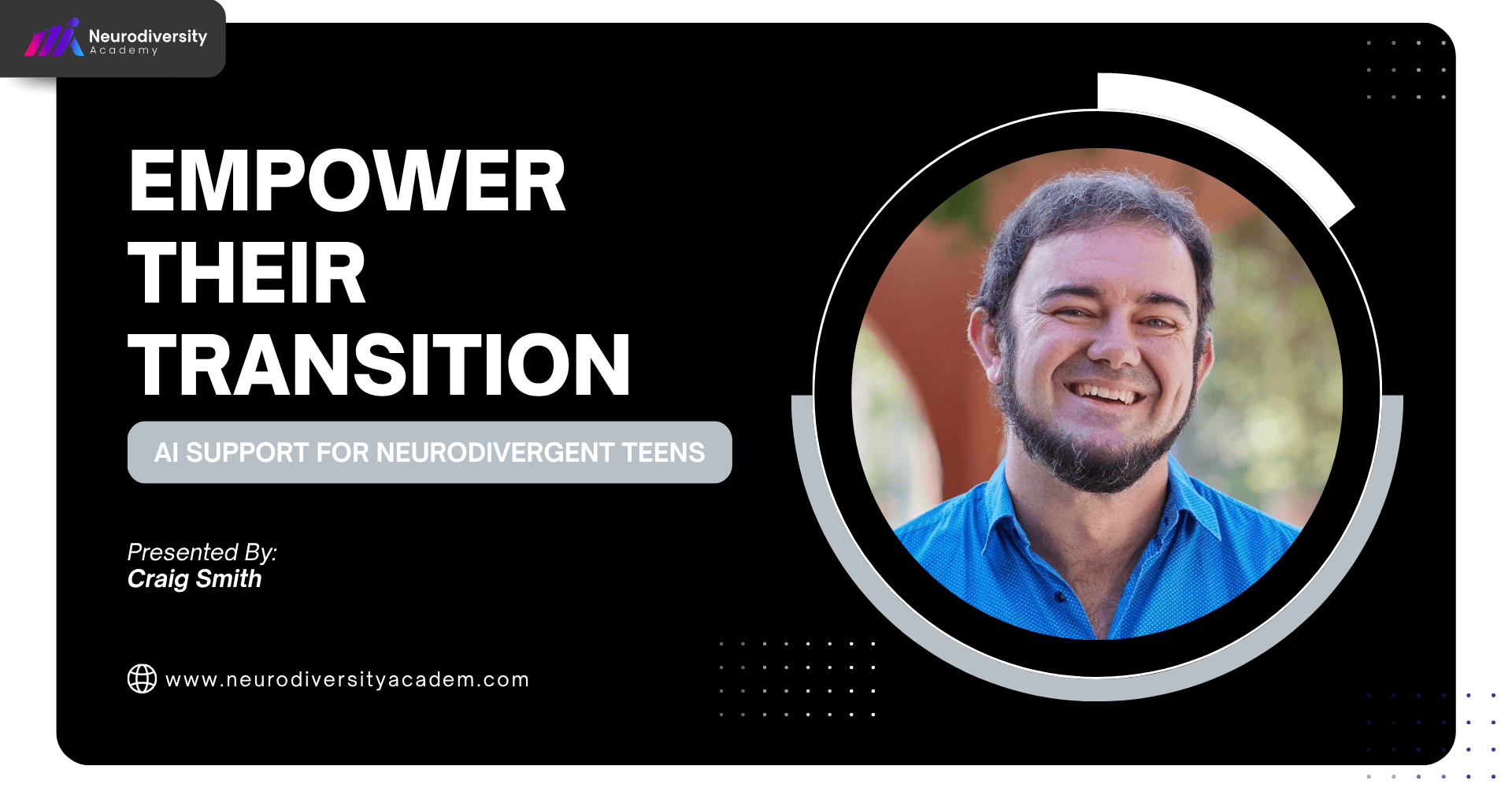Empowering the Transition: How AI Can Support Neurodivergent Teens Through Tertiary Education
By Will Wheeler – Neurodiversity Academy
The journey from high school to tertiary education can be daunting for any teenager—but for neurodivergent teens, the challenges are amplified. Executive functioning, time management, emotional regulation, and organization become even more critical during this transitional phase.
That’s why we launched our first webinar, Empower Their Transition: AI Support for Neurodivergent Teens, featuring renowned educator and advocate Craig Smith. Craig brought his wisdom, experience, and a toolkit of AI resources designed to support neurodivergent learners in navigating their next steps.
Why This Matters
As someone who left school without clear direction—told I’d never have a proper career—I know firsthand how discouraging early setbacks can be. Neurodiversity Academy was born from that experience. Our goal is simple but powerful: help neurodivergent students find supportive, inclusive educational environments and equip them with tools to thrive.
This webinar wasn’t just about cool tech. It was about transforming lives through understanding and innovation.
Meet Craig Smith: Educator, Advocate, Innovator
Craig Smith is a global leader in inclusive education. He’s the Manager of Technology and Innovation at Positive Partnerships (Autism Spectrum Australia), a consultant to Apple on accessibility, and a lecturer at Notre Dame University. His work has reached the UN, global ministries of education, and classrooms across the world.
But what really sets Craig apart is his human-centred, playful approach to education. In this session, he showed us just how powerful that can be when paired with the right tech.
The Power of AI for Executive Functioning
Craig walked us through five key executive functioning areas that AI can support:
1. Planning and Organisation
AI tools like ChatGPT, Goblin Tools, and Ayoa can break down complex tasks into manageable steps. For example, ChatGPT can act as your “assignment breakdown coach,” dissecting a lengthy assessment into a sequenced, timed checklist. Goblin Tools even allows visual tick-box planning—perfect for neurodivergent learners who thrive on structure.
2. Time Management
Using prompts like “Create a weekly study schedule with time for cooking, exercise, and rest,” AI can generate personalized timetables. Craig demonstrated this using ChatGPT and apps like Teemo, which visually map out routines.
3. Working Memory
AI tools such as Otter (for lecture transcription) and Notebook LM (for organizing and querying study notes) support memory retention. These tools give students a second brain to help with review, repetition, and comprehension.
4. Metacognition
To get “unstuck,” AI can offer motivational role-playing prompts—like turning study sessions into secret agent missions. This turns executive dysfunction into an engaging, gamified experience, increasing emotional investment and follow-through.
5. Emotional Regulation
Craig introduced his own AI-powered Spoon Theory Calculator, which helps users visualize energy use across tasks and prevent burnout—a vital support in managing mental wellness during transitions.
Voice Mode: A Game-Changer
One of Craig’s favourite features? The voice chat mode in ChatGPT. This allows users to talk through their plans and problems and receive interactive, real-time guidance—ideal for students who think better out loud or struggle with written prompts.
It’s even being used creatively—like one teen who used ChatGPT in “Harry Potter mode” to guide her through cleaning her room!
Practical Considerations: Safety, Ethics, and Access
Many attendees raised questions about privacy, ethics, and readiness. Craig and I agree—students must be taught to use these tools safely, ethically, and effectively. That means:
- Avoiding personal data input
- Using AI as a guide, not a replacement
- Understanding accessibility vs. academic integrity
- Learning how to self-manage and prioritize with digital tools
The Bigger Picture: Changing the System
There’s no one-size-fits-all path to education. And yet, too often our systems treat neurodivergent students as if there is. Through Neurodiversity Academy, we aim to:
- Build a national directory of neuro-inclusive education providers
- Host regular free webinars with lived-experience experts
- Deliver community-driven education resources
- Equip neurodivergent individuals with skills for both study and life
- Our upcoming platform will function much like Open Universities Australia—but with a neurodivergent lens
If you missed this webinar or want to share it, a recording is available.
🔗 Watch the full webinar:
Final Thoughts
Technology can’t replace human connection—but it can amplify possibility. Craig reminded us that with the right tools, support, and community, neurodivergent teens don’t just survive transitions—they thrive through them.
We’re just getting started.




